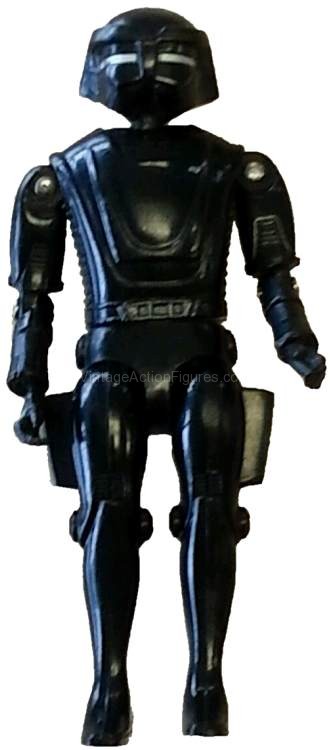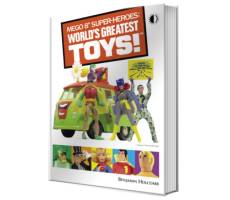MEGO action figures are some of the most popular among collectors today. The company which is pronounced Mee-go was started back in 1954 by D. David Abrams and sold cheap toys to department stores. It wasn’t however, until 1971 when Abram’s son Marty joined the business that Mego started to move in a direction that would change the company forever, or, at least until 1982 when they filed for bankruptcy. More on that later.
Marty Abrams was named President of Mego in 1971 when he graduated from business school and immediately set the company in a new direction. Instead of making no-name small toys as filler for department stores he decided to go all in. He decided to buy the toy rights to celebrities, movie characters and comic heroes and then create small action figures to sell as toys. First was Action Jackson…
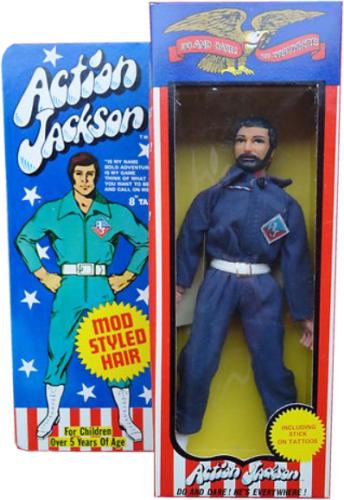
Mego’s Action Jackson was intended to compete with Hasbro’s G.I. Joe action figure. Mego however decided to make a slightly smaller figure than the 12 inch high G.I. Joe and made Action Jackson an 8 inch figure. This became the model for Mego’s later figures and was definitely one of the foundations of their success. Interestingly, Action Jackson wasn’t that bog a success. It is estimated that Mego sold around 2.5 million of the figures in the first year but sales trailed off after that and the figure disappeared from toy shelves by 1974. Still, Action Jackson set the stage for what was to come.
Marty Abrams got busy and acquired rights to the DC comic characters and immediately produced the World’s Greatest Super Heroes (WGSH) line. Initially Mego made four figures to test the market with. Superman, Batman, Robin, and Aquaman were sold at EJ Korvettes department store in boxes with no plastic window through which to see the figure.
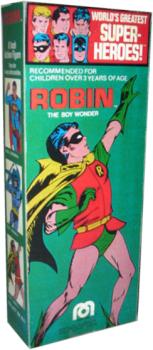
The line was a success and in 1973 Mego added some more figures including Tarzan, Spiderman, and Captain America. One problem with the solid boxes was that kids couldn’t see the figure inside and would therefore open and damage the boxes in the store. So, Mego decided to add a plastic window to the boxes so that the figure could be seen.
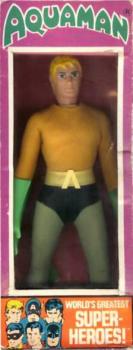
Then along came a department store named SS Kresge and Co. which would later become KMart. Kresge wanted a way to hang the action figures on a display rack or shelves so Mego designed a cardboard back with what is now called a plastic bubble of blister. Nearly all action figures have been package this way since that time.
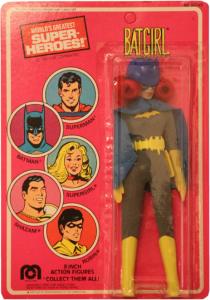
In 1975 Mego introduced a number of Marvel super hero action figures including Hulk, Iron Man, green Goblin, Falcon and Lizard. 1976 saw the introduction of the Fantastic Four, Conan and Thor.
Mego had catapulted to the top of the toy store hierarchy and was ranked number 6 out of all toy companies at one point in time. Business Week magazine even profiled the company and their “formula for success” in 1976. Then came disaster. In 1977 the makers of a little know movie called Star Wars offered Mego the rights to its characters and for some reason Mego declined. Kenner then stepped in and purchased the rights. Well, we all know the history of Star Wars now. Star Wars action figures put Kenner in the lead in the action figure market and Mego had difficulty recovering.
Then Mego’s President Martin Abrams and a few other company executives were indicted on federal wire fraud charges. They were apparently selling returned merchandise to vendors and not reporting the profit over a period of nine years. The amount was only $100,000 which seems a small sum given the amount of revenue the company was generating and the fact that it was received over a 9 year period. Hardly even noticeable by today’s fraud standards. Nonetheless, the executives were convicted and received short sentences.
Mego had made its last toy. The company filed for bankruptcy June 14, 1982 and their plan to successfully re-emerge from bankruptcy never really materialized and they were out of business by 1983. Mego had made their mark in action figure and toy history however and many of their innovations are still prevalent in the action figure market.
